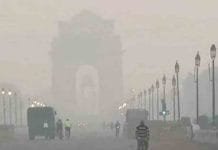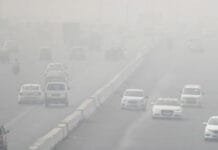
The monsoon season continues to make its presence felt, particularly in the northern and eastern regions of India. From the mountains of North India to the plains of Bihar and Bengal, heavy rains have created significant challenges for the local population. As the monsoon makes its retreat, its lingering effect has brought both relief and devastation to many areas. Cloudbursts, landslides, and flood-like situations have increased the troubles of the people, affecting daily life, agricultural lands, and travel routes.
Monsoon Havoc from the Mountains to the Plains
Heavy rainfall has lashed the hilly regions of North India, including states like Himachal Pradesh and Uttarakhand, causing severe disruptions. The Chardham Yatra routes have been particularly affected, with frequent landslides and road blockages leaving thousands stranded.
Meanwhile, the situation in the plains, particularly in Bihar and Bengal, has been equally grim. Monsoon rains have intensified across these states, leading to flood warnings and damage to both property and crops. The India Meteorological Department (IMD) has issued orange alerts and red alerts for multiple regions, warning residents to be cautious of upcoming heavy rainfalls and potential disasters.
Cloudburst in Sirmaur: A Devastating Loss in Himachal Pradesh
In Himachal Pradesh’s Sirmaur district, the devastating effects of the monsoon were felt as a cloudburst on Wednesday night caused widespread damage. Occurring around 1 AM in the forest of Kando Kansar, the cloudburst sent torrents of water and debris rushing towards nearby villages. Paddooni village was particularly affected, with residents forced to seek refuge on the rooftops of their homes to escape the onslaught.
The aftermath of the cloudburst saw massive destruction to agricultural land. In total, approximately 500 acres of paddy fields were destroyed due to the debris. Moreover, flooding in the Panchbhaiya ravine further devastated local crops, wiping out an additional 1,000 bigha of farmland. In terms of infrastructure, the Bata River surged to dangerous levels, reaching the bridge and triggering the opening of four floodgates of the Jaton Barrage early on Thursday morning.
To put the intensity of the rain into perspective, Dhaulkuan in Sirmaur recorded 275 mm of rainfall within 24 hours, marking the highest rainfall recorded in September since 2010.
Landslides in Uttarakhand: Chaos on the Badrinath Highway
Uttarakhand, another northern state, is also grappling with the monsoon’s fury. On Thursday, heavy rains triggered a landslide on the Badrinath Highway between Khankra and Narkota. This landslide led to a 10-kilometer-long traffic jam, leaving more than 5,000 passengers stranded in 900 vehicles for over 11 hours. The blocked highway saw an influx of debris and large boulders tumbling down from the hillside, making it incredibly difficult to clear.
Other parts of Uttarakhand also faced similar problems. Landslides in Chatwapipal and Kameda caused delays of over five hours, with 2,000 passengers trapped in more than 500 vehicles. The lack of basic necessities, such as food and water, compounded the troubles faced by the stranded travelers. The region is known for its reliance on these highways for the transport of essential goods, such as milk and vegetables, but due to the blockage, supplies failed to reach their destinations on time.
Meanwhile, in Pithoragarh, the Tawaghat Highway remained closed for eight hours due to debris blocking the road at three key points. Among those trapped were 28 Kailash pilgrims, unable to continue their journey.
Mumbai’s Unexpected Deluge: Chaos in the City
In a surprising turn, the monsoon rains that had been mild for much of September suddenly hit Mumbai on Wednesday evening, bringing with them widespread flooding and traffic jams. The sudden downpour caught many by surprise, leading to severe waterlogging in several parts of the city. Office workers on their way home faced hours-long delays as the streets flooded and traffic ground to a halt.
The IMD has since issued a red alert for the surrounding districts of Mumbai, Thane, Raigad, and Ratnagiri, warning of continued heavy rainfall. This deluge comes as an unwelcome surprise, as the city had experienced mostly dry weather in the week prior.
Bihar Braces for Continued Rainfall Until October 2
Bihar, one of India’s key agricultural states, has also been hit by renewed monsoon activity. After a brief period of respite, the state is once again experiencing heavy downpours, with the IMD predicting that the rains will persist until at least October 2.
The state’s capital, Patna, and its surrounding regions have witnessed intermittent rains over the past few days. The orange alert issued for districts such as Sitamarhi, Shivhar, and Champaran warns of very heavy rainfall at isolated locations over the next 24 hours. Additionally, a yellow alert has been issued for 10 other districts, urging residents to remain on high alert and prepare for potential flooding.
Rainfall Brings Disaster to Sikkim
In Sikkim, the rains have provided some relief after an unusually hot September. However, the downpours have also brought disaster in their wake, with landslides causing road closures and blockages. The state’s mountainous terrain is particularly vulnerable to such events, and efforts are ongoing to clear the roads of debris and fallen rocks.
The Sikkimese government is actively working to restore normalcy by clearing affected routes. However, the continued rainfall is making the situation difficult, as landslides persist, hampering efforts to reopen the roads to traffic.
Conclusion: The Monsoon’s Unrelenting Grip
The current monsoon season is far from over, and its impact is still being felt across a wide swath of India. From the mountainous regions of the north to the plains of Bihar and Bengal, the heavy rains are causing untold difficulties for the population. Cloudbursts, landslides, and floods have disrupted lives, damaged crops, and blocked critical highways. As residents and authorities work tirelessly to mitigate the effects of these natural calamities, the forecast suggests that the monsoon may continue to bring heavy rains for several more days.
India remains on high alert, with warnings issued across multiple states as the IMD continues to monitor the situation. The nation’s collective effort will be needed to navigate through this challenging period, as the monsoon continues its slow retreat.














